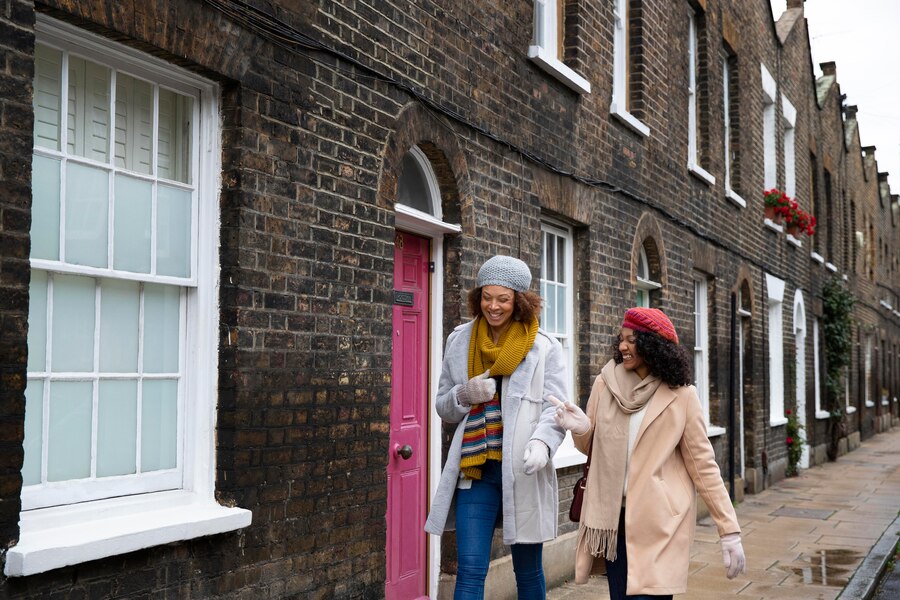In the world of DIY decoration, the choice of colors is of paramount importance. The shades you select can transform a space, infusing it with a unique atmosphere that reflects your personality. Whether you want to create a warm cocoon or a dynamic atmosphere, it is essential to master the art of color combination. In this guide, we will explore the keys to judiciously choose the shades that will sublimate your decoration projects, while taking into account the harmony and style you want to give to your interior.
The DIY decoration is an art that makes it possible to personalize its interior according to its tastes and inspirations. The choice of colors is crucial to create a harmonious and welcoming atmosphere. In this article, we’ll explore how to select the right colors and how to aesthetically combine them to make your space a unique place. Whether you want a warm atmosphere or a soothing style, we have tricks to guide you.
Understanding the impact of colors on your decoration
Colors have a powerful emotional and psychological impact. Some shades may widen one room, while others create a cosy atmosphere. For example, cold colors, such as blue or green, evoke serenity and are ideal for rest rooms such as bedrooms. On the other hand, warm shades, such as orange or red, add energy and stimulate creativity, perfect for a living room or kitchen.
The basics of color choice
To choose your colours carefully, it is essential to adopt the 60-30-10 rule. This means that you have to attribute 60% of the dominant color to the space (usually a neutral tone), 30% to a complementary color (often used for furniture) and 10% to an accent color that will bring a touch of dynamism. For example, a light grey wall (60%), natural wood furniture (30%) and bright yellow accessories (10%) form a nice pallet.
Observing the external environment
A often neglected, but very effective, trick is to take inspiration from the colours of the outdoor environment. Landscapes, seasons and natural light can influence your selection. For example, if you live near the sea, shades of blue and sand can provide visual continuity between the inside and the outside.
Combining colors like a pro
To succeed in combining colors with each other, here are some practical tips: dare unexpected combinations. A bold palette can make all the difference. Combining a bright color with neutral shades allows the whole to be balanced while providing character. A complementary color, such as an emerald green, can contrast with earthy tones to create a harmonious decoration.
Playing with different tones
Variations in whites also play a significant role. Do not choose a perfect white, but experiment with slightly tinted whites that will give deep and charming to your space. Also, do not hesitate to incorporate dark colors into small touches. Darker furniture or accessories can provide sophistication to your decoration without darkening it.
Create an atmosphere with the right colors
Colors can transform the atmosphere of a space. If you are looking for a relaxing atmosphere, opt for soft and soothing colours, such as purple or lavender. For a warm and welcoming atmosphere, earthy shades such as ochres and browns are perfect. These colours are ideal for carrying out a Mediterranean decoration site, bringing warmth and conviviality.
Ideas and inspirations for your DIY decoration
To find inspiration in your decoration project, explore online resources. Color simulators can help you visualize different combinations. Do not hesitate to consult articles on current tiling trends, or to discover tips for making home-made light garlands to brighten your interior.
In conclusion, mastering choice and colour combination is the key to a successful DIY decoration. By playing with a variety of pallets, and taking into account the effects of colors on the mood, you can create a space that looks like you and in which it is good to live.
| Colour | Impact on Ambiance |
| White | Evoks clarity and space, perfect for visually enlarging rooms. |
| Blue | Provides a feeling of calm, ideal for bedrooms. |
| Yellow | Energizing and cheerful, perfect for welcoming living spaces. |
| GreenVert | Reminds nature, promotes zenitude and appeasement. |
| Red | Stimulates energy and passion, to be used in moderation. |
| Grey | Make a touch of modernity, which can be easily combined with other colours. |
| Beige | Creates a warm and welcoming atmosphere, ideal for family spaces. |
In the world of DIY decoration, the choice of colors is essential to create a harmonious and welcoming space. Whether you want to bring pep’s into your interior or create a soothing atmosphere, understanding how to associate and choose your colors wisely can make all the difference. This article will guide you through tips and tips to select the ideal shades that will match your style.
Be inspired by your environment
Before you even start choosing your colors, take a moment to observe what’s around you. The exterior shades of your home can offer valuable clues. For example, if your house is surrounded by greenery, shades of green or brown could be a nice transition to the interior. Taking into account the visible landscape, you can create a harmonious continuity between the exterior and the interior.
The rule of proportions
For a balanced result, think about the 60-30-10 rule. This means that 60% of your room should be in a dominant neutral color, 30% in a complementary tint (such as furniture or accessories), and 10% for brightly coloured accents. This method helps to structure your space by making the decoration more dynamic without being overwhelming.
Cold colors for serenity
If your goal is to create a cozy, soothing environment, opt for cold colors such as blue, green or purple. These shades inspire calm and are ideal for spaces such as a room or office. They evoke nature and water, bringing a feeling of serenity to your interior.
Hot shades for conviviality
To create a warm and welcoming atmosphere, do not neglect the warm colors such as the ochres, the land of Siena and red. These colors create a dynamic atmosphere, perfect for living rooms such as the living room, where we want to bring together family and friends.
Mix the colours with boldness
Dare to combine several colors in your DIY decoration. Don’t be afraid to experiment. For example, a deep blue can be superbly associated with a bright orange; a pastel palette can marry in a rich tone for a contemporary result. Intensify the effect by multiplying the decorative elements to different color variations.
Creating a beautiful decoration
The decoration depends not only on the colors, but also on the way in which they are arranged. Play textures, patterns and materials to enrich the color mix. For example, you can accentuate plain walls with cushions or curtains with colored patterns. Customized cushions bring a unique touch to your space, while playing with the shades chosen.
Using online resources
To learn more about colour associations, do not hesitate to consult specialized articles. These online resources can provide you with additional ideas and inspirations to turn your DIY projects into a pleasant and aesthetic living space.
Trendy colours
- White Broken – Neutral shrapnel for a minimalist look.
- Turquoise – Brings a touch of freshness and vitality.
- Ocre – Creates a warm and welcoming atmosphere.
- Grey Mouse – Sober, easy to associate elegance.
Colours to be combined
- Green Olive and Beige – Natural and soothing.
- Red Brick and White – Farm and bright for a strong impact.
- Blue Night and Silver – Sophisticated and polished.
- Yellow Mustra and Black – Energetic and bold.
Choose colours for your DIY decoration
In the world of DIY decoration, the choice of colors plays a crucial role in creating a harmonious and welcoming atmosphere. Whether you want to transform a corner of your living room, a bedroom, or even the exterior of your house, understanding how to combine shades is essential. This article offers you tips and recommendations to make your color choices a success while ensuring consistency in your decoration.
Analyze the environment
Before you go into painting or decoration, look at what’s around you. The exterior colors of your home as well as the landscapes visible from your windows should influence your selection. For example, if you live in a green natural setting, the shades of green or brown can be very soothing inside. Similarly, the vibrant colors of a flowery garden can inspire bolder and brighter choices.
Balance your pallet
A good rule of thumb is to opt for a harmony of three colours per room. Start with a dominant tint, often a neutral color like gray, beige or white, which will make up 60% of your space. Then add a complementary color that will bring life, representing about 30% of the palette, followed by a vibrating accent for a punchy effect, about 10%. This method will help you create a balanced and pleasant atmosphere.
Harness the colours of cold and warm colours
Cold colors, such as shades of blue and green, bring a feeling of serenity and tranquillity, ideal for bedrooms. On the other hand, warm colors, such as red, orange or yellow, stimulate energy and are perfect for living spaces such as living rooms or kitchen. Do not hesitate to play with these contrasts to energize your decoration while maintaining a certain coherence.
Test your colours
It is vital to test your colour choices before finalising your decision. Paint samples are a great way to see how different shades interact with each other and with the light of your space. Apply samples to your walls and watch them at different times of the day to make sure they match the desired mood.
Inspire yourself from trends
Colour trends change over the seasons. Check out decorative magazines, follow inspiring social media accounts, or visit decoration salons to see the latest developments. Some colors, such as earth tones shades, are very popular and bring a touch of warmth while remaining elegant.
Customize your decoration
Remember that your decoration should primarily look like you. Combine colors that evoke positive memories or emotions, even if they don’t fit current trends. Unleash your creativity by experimenting with unexpected hues and adding customized elements. This will make your space unique and enjoyable to live.
By following these recommendations, you will be able to make judicious color choices for a successful DIY decoration. Remember that the important thing is to create a place that looks like you and that brings you well-being on a daily basis.
FAQ on the choice of colors for your DIY decoration
Neutral colors such as soft grays, broken whites and beiges are very popular. Pastel shades such as powdered pink or sky blue also bring a touch of freshness.
It is essential to consider the natural light, the use of the room, as well as the mood you want to create there. For example, cold colors promote serenity in a room.
For a good balance, follow the 60-30-10 rule: 60% of a main colour, 30% of a complementary colour and 10% of an accented tint.
Absolutely. Bright colors add dynamism and energy, especially when balanced by neutral tones that bring structure to the whole.
To create a calm atmosphere, opt for cold tones such as blue or green. These colors evoke nature and bring a sense of well-being.
Avoid overly contrasting combinations that could harm harmony, such as bright red with bright green, unless it is intentional for a festival effect.
Play with shades of the same color for a monochrome effect, or opt for colors next to each other on the chromatic circle for visual softness.




